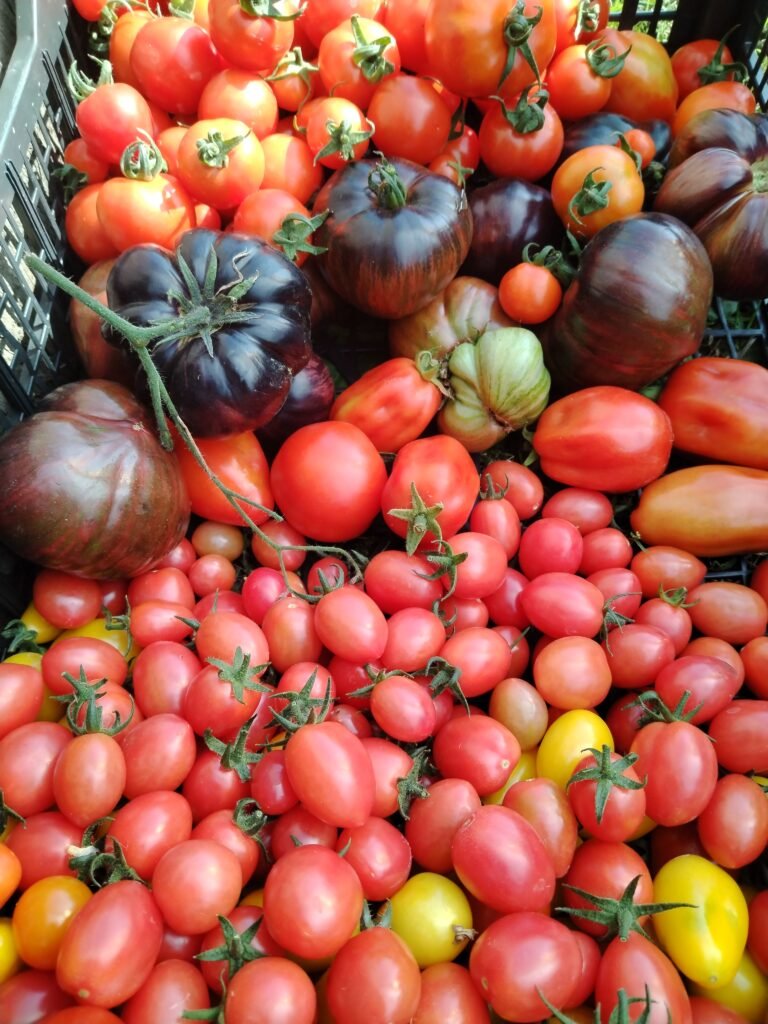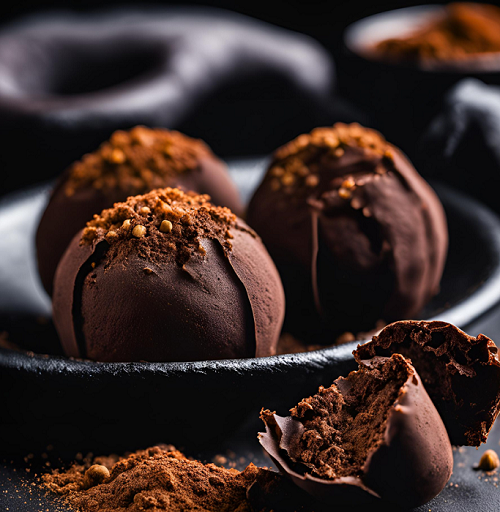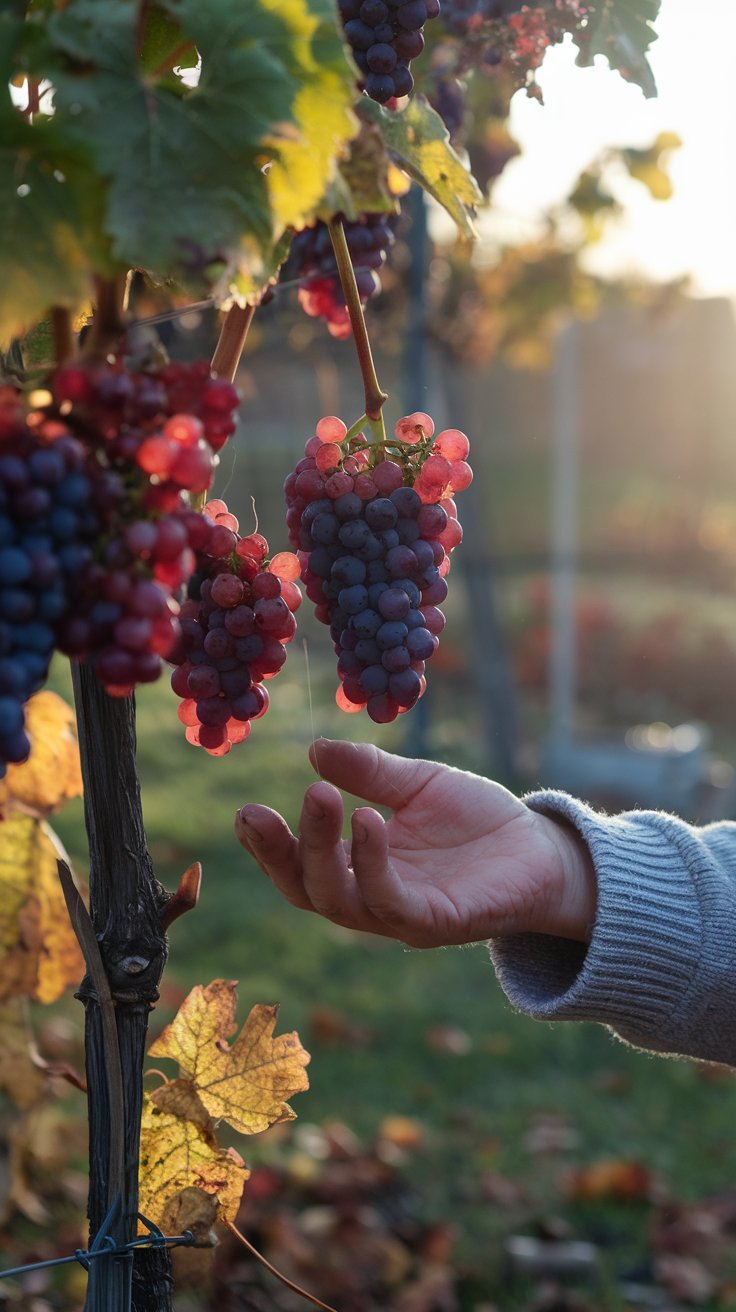Growing kale year-round isn’t just a savvy gardening move—it’s a game-changer for your kitchen and your health. Packed with vitamins, minerals, and fiber, kale is one of the most nutrient-dense greens you can grow. And the best part? There’s a whole world of kale varieties beyond the usual curly kind at the supermarket. From the deep green, crinkled leaves of Lacinato (Dinosaur Kale) to the broad, cabbage-like foliage of Portuguese Kale, this leafy legend never gets boring!
Take Portuguese Kale, for example—we grew it last year, and let me tell you, the sheer size of those leaves had the kids in stitches. They held them up like superhero capes, and I swear, one leaf could have doubled as an umbrella! But beyond the fun, its tender, slightly sweet flavor made it a hit in soups and sautés. That’s the beauty of kale: with so many varieties, there’s always something new to try.
But what’s even better? Kale is one of the easiest greens to grow, thriving in everything from frosty winters to scorching summers—with the right techniques, of course. Whether you’re working with raised beds, containers, or a backyard plot, you can keep a steady supply of fresh, homegrown kale all year long. So, if you’re ready for a continuous harvest of this powerhouse green, let’s dive into the best methods to keep your kale thriving through every season!
Best Kale Varieties for Year-Round Growing
If you want fresh, homegrown kale in every season, variety selection is everything. Some types thrive in frosty winters, while others power through summer’s heat. And if you fancy a long-term relationship with your greens, perennial kale might be the answer. Let’s break it down.
Best Winter Kale Varieties
Cold temperatures can actually make kale sweeter, and some varieties thrive in frosty conditions. Lacinato kale (a.k.a. Dinosaur kale) is a winter favorite—its dark, bumpy leaves develop an even richer flavor after a touch of frost. Winterbor kale, with its deeply curled leaves, stands strong through snow and freezing temperatures, making it a top choice for winter gardens. Scarlet kale, a vibrant red-tinged variety, is another frost-hardy option that keeps producing well into the colder months.
Best Summer Kale Varieties
Kale might be known as a cool-weather crop, but some varieties can handle the heat. Red Russian kale is a top pick—it grows fast, stays tender, and resists bolting in warmer temperatures. Premier kale is another summer survivor, bred for both heat tolerance and quick regrowth after harvesting. If you’re in a warm climate and still want to grow kale year-round, stick to these heat-friendly options and plant them in partial shade to keep them from getting stressed.
Best Perennial Kale Varieties
What if you could plant kale once and harvest it for years? That’s where perennial kale varieties come in. Daubenton’s kale and Taunton Deane kale are both incredible options—they don’t bolt like annual kale and keep producing new leaves season after season. They’re perfect if you love low-maintenance gardening and want a steady supply of fresh greens without replanting.
The trick to growing kale year-round is mixing things up—grow winter-hardy varieties for cold months, heat-tolerant types for summer, and consider adding a perennial variety for a near-endless harvest. With the right selection, you’ll never be without fresh, homegrown kale!
How to Grow Kale in Spring & Summer
Kale might be famous for its cold tolerance, but with the right approach, you can keep it thriving even when the weather warms up. Timing, shade, and proper watering are key to preventing bolting and keeping your kale tender through the hotter months.
Best Planting Times for Warm-Weather Regions
In mild spring climates, kale can be sown directly outdoors once the soil reaches 45°F (7°C). If you live somewhere with scorching summers, start seeds indoors and transplant them out in early spring, or wait until late summer for a fall harvest. For continuous greens, stagger plantings every few weeks so you always have fresh leaves coming in.
How to Prevent Kale from Bolting in Summer
The biggest challenge of growing kale in warm months is bolting—when plants sense heat stress and rush to flower. Once this happens, the leaves turn bitter, and your harvest is over. To keep kale from bolting:
- Plant heat-tolerant varieties like Red Russian or Premier.
- Provide afternoon shade with taller companion plants or shade cloth.
- Keep the soil moist—drought stress speeds up bolting.
- Harvest leaves regularly to encourage continued growth.
Companion Planting for Shade & Pest Control
Pairing kale with the right plants can help manage both heat and pests. Tall crops like corn, sunflowers, or pole beans provide shade, keeping kale cooler in the afternoon sun. To deter aphids and cabbage worms, plant basil, nasturtiums, or marigolds nearby—these companions act as natural repellents.
Ideal Soil Temperature & Watering Needs
Kale prefers soil temperatures between 55-75°F (13-24°C). If the soil gets too hot, use mulch to cool it down and retain moisture. Water deeply 2-3 times a week, ensuring the soil stays consistently damp but not waterlogged. Early morning watering helps prevent heat stress and keeps plants hydrated throughout the day.
With the right care, kale can power through spring and even summer, giving you fresh greens long before the cooler months return.
How to Grow Kale in Fall & Winter
If there’s one season kale truly shines, it’s winter. Frost-kissed leaves, deepened flavor, and the joy of harvesting fresh greens when everything else is dormant—what’s not to love? With a bit of planning, you can enjoy kale straight from the garden, even in the chilliest months.
When and How to Plant Kale for Winter Harvests
To ensure a steady supply of winter kale, sow seeds 6-8 weeks before your first fall frost. This gives plants enough time to establish before the cold sets in. If starting from transplants, plant them at least a month before frost. In milder climates, you can continue sowing well into autumn for an extended harvest.
Frost Tolerance: Why Kale Gets Sweeter After a Freeze
Kale has a little magic trick—when temperatures drop, it converts starches into sugars, acting as a natural antifreeze. This is why winter-grown kale often tastes sweeter and less bitter than summer-grown plants. The first frost won’t harm your crop—instead, it makes it even more delicious!
Row Covers, Mulch & Other Protection Methods
Even though kale can survive down to 10°F (-12°C), a little extra protection goes a long way.
- Mulch with straw or leaves to insulate roots and retain soil warmth.
- Row covers or fleece tunnels can shield plants from harsh wind and deep freezes.
- In extreme cold, low tunnels or cold frames create a microclimate that keeps kale growing all season.
Overwintering Kale: Tips for a Second-Year Harvest
Kale is technically a biennial, meaning it grows leaves in its first year and flowers in its second. If you leave plants in the ground over winter, they’ll sprout fresh new leaves in early spring. To improve their chances of survival:
- Cut back older leaves but leave the central growing tip intact.
- Keep plants covered with mulch or row covers to protect against deep freezes.
- Perennial kale varieties like Taunton Deane and Daubenton’s will keep producing year after year without the need for replanting.
With these simple strategies, you can keep kale thriving through the cold and enjoy fresh, homegrown greens no matter the season!
Indoor & Container Gardening: How to Grow Kale Without a Garden
No garden? No problem. Kale is surprisingly adaptable and grows beautifully in containers, on sunny windowsills, and even in hydroponic setups. Whether you’re short on space or just want fresh greens year-round, here’s how to make it happen.
Choosing the Right Pots and Soil for Container-Grown Kale
For happy kale plants, start with:
- A deep pot (at least 12 inches) to accommodate kale’s strong root system.
- Well-draining soil enriched with compost for nutrient-dense leaves.
- Drainage holes to prevent soggy roots—kale hates wet feet!
Best Locations Indoors for Optimal Sunlight
Kale loves light, and the more it gets, the better it grows. Aim for:
- A south-facing window for at least 6 hours of sunlight per day.
- If natural light is limited, supplement with full-spectrum LED grow lights for 12-14 hours daily.
Hydroponic and Grow-Light Setups for Year-Round Greens
No soil? No problem. Kale thrives in hydroponic systems, making it a perfect choice for year-round greens.
- Kratky or deep-water culture (DWC) systems work well for low-maintenance hydroponic kale.
- Nutrient-rich water is key—look for hydroponic fertilizers high in nitrogen.
- LED grow lights keep plants thriving in winter or low-light homes.
How to Manage Humidity and Airflow for Healthy Plants
Indoor air can be tricky—too dry, and kale struggles; too humid, and mildew moves in. Keep it balanced by:
- Using a small fan to improve airflow and reduce disease risk.
- Misting occasionally if your indoor air is very dry.
- Spacing plants properly to allow good circulation and prevent fungal issues.
With a bit of planning, even the smallest space can become a thriving kale patch. Fresh, homegrown greens—right from your kitchen!
Watering, Fertilizing & Soil Needs for Kale
Kale isn’t a fussy plant, but if you want those deep green, nutrient-packed leaves, getting the right balance of water, soil, and nutrients is key. Watering needs change with the seasons—during warmer months, kale thrives with about an inch of water per week, but in cooler seasons, you’ll want to scale back to avoid waterlogged roots. That said, consistency is everything! A deep, even soak is far better than frequent shallow watering, as it encourages strong root growth.
When it comes to feeding your kale, organic fertilizers make all the difference. A slow-release compost or well-rotted manure mixed into the soil before planting sets the foundation for robust growth. But don’t stop there! Throughout the season, a nitrogen-rich fertilizer—like diluted fish emulsion or alfalfa meal—gives kale the boost it needs to keep producing tender leaves. If you’re growing kale in containers, an organic liquid feed every two weeks helps maintain nutrient levels since potted plants leach nutrients faster than garden soil.
And speaking of soil, kale has a strong preference—slightly acidic, well-draining, and rich in organic matter. Ideally, aim for a pH between 6.0 and 7.0. If your soil is too acidic, adding lime helps balance it out, while sulfur can lower the pH if it’s too alkaline. A quick soil test can take the guesswork out of adjustments, ensuring your kale has the perfect growing conditions. With the right care, you’ll have lush, vibrant leaves all season long!
Pesky Pests: Who’s After Your Kale?
Kale may be tough, but that doesn’t stop garden critters from wanting a bite. Aphids, those tiny sap-suckers, love clustering under the leaves, causing curling and yellowing. Then there are cabbage worms, the little green caterpillars that can strip a plant overnight if left unchecked. And let’s not forget flea beetles—those tiny jumping pests that leave behind telltale shotgun-hole patterns in the leaves.
Organic Pest Control: Keeping Kale Safe Naturally
Fortunately, you don’t need harsh chemicals to keep your kale safe. Row covers provide a physical barrier against flying insects like cabbage moths, while companion planting can help deter pests—think marigolds, dill, and nasturtiums to keep unwanted visitors at bay. If aphids show up, a strong blast of water or a neem oil spray works wonders. For cabbage worms, handpicking (or inviting some birds to the garden) can be surprisingly effective, and BT (Bacillus thuringiensis), a natural bacteria, stops them in their tracks.
Kale Diseases: Spotting the Signs and Acting Fast
While kale is generally hardy, it’s not immune to disease. Powdery mildew, that white, powdery coating on the leaves, thrives in humid conditions—improving airflow and avoiding overhead watering can help prevent it. Black rot, on the other hand, shows up as yellow V-shaped lesions and can spread fast. Removing infected leaves and rotating crops is your best defense. A little proactive care goes a long way in keeping your kale patch healthy!
Harvesting Kale: Pick It Right, Keep It Growing
When it comes to harvesting kale, the key is to pick from the bottom up. Older leaves near the base should go first, allowing the younger ones at the top to keep growing strong. This “cut-and-come-again” method ensures a continuous supply throughout the season. Just be sure to leave at least five or six central leaves intact so the plant can keep producing. And if your kale is thriving? A little strategic pruning can even encourage bushier growth!
Storing Fresh Kale: Crisp, Not Limp
Nothing’s worse than reaching for fresh kale only to find a sad, wilted mess. To keep it crisp, store unwashed leaves in a breathable bag in the fridge’s crisper drawer. If they start looking tired, a quick soak in cold water can revive them. Want kale that stays fresh for up to two weeks? Wrap the stems in a damp paper towel before storing.
Preserving Kale: Enjoy It Year-Round
If you’ve got more kale than you can handle, don’t let it go to waste! Freezing is easy—just blanch the leaves for two minutes, dunk them in ice water, then store them in airtight bags. Drying kale in a dehydrator or low oven turns it into a perfect snack or soup addition. And for something different, try fermenting kale into a probiotic-rich side dish—think kale kraut with garlic and chili for a flavorful twist!
Bringing It All Together: Growing Kale Year-Round & Making the Most of It
Whether you’re tucking frost-kissed leaves into winter soups or plucking tender spring greens for a fresh salad, growing kale year-round is not just doable—it’s downright rewarding. With the right varieties, a bit of planning, and some clever season-extending tricks, you can keep this nutrient powerhouse on your plate no matter the month. And the best part? Every bite of homegrown kale means fewer pesticides, fresher flavors, and a garden that gives back.
But let’s be honest—not every leafy green is as easy to grow as kale. Some store-bought veggies come with a hefty dose of chemicals, making them less than ideal for a healthy kitchen. That’s why knowing which ones land on the Dirty Dozen list is so important. If you’re serious about eating clean and cutting down on pesticide exposure, it’s worth taking a closer look at the worst offenders—and finding out how to grow them yourself.
So, before you plan your next planting season, take a moment to check out The Dirty Dozen: Why These Foods Are on the List & How to Avoid Pesticides. You might just find a few more crops worth adding to your garden! After all, if you can grow your own kale with ease, why not take on a few more homegrown staples? Your plate—and your health—will thank you.






